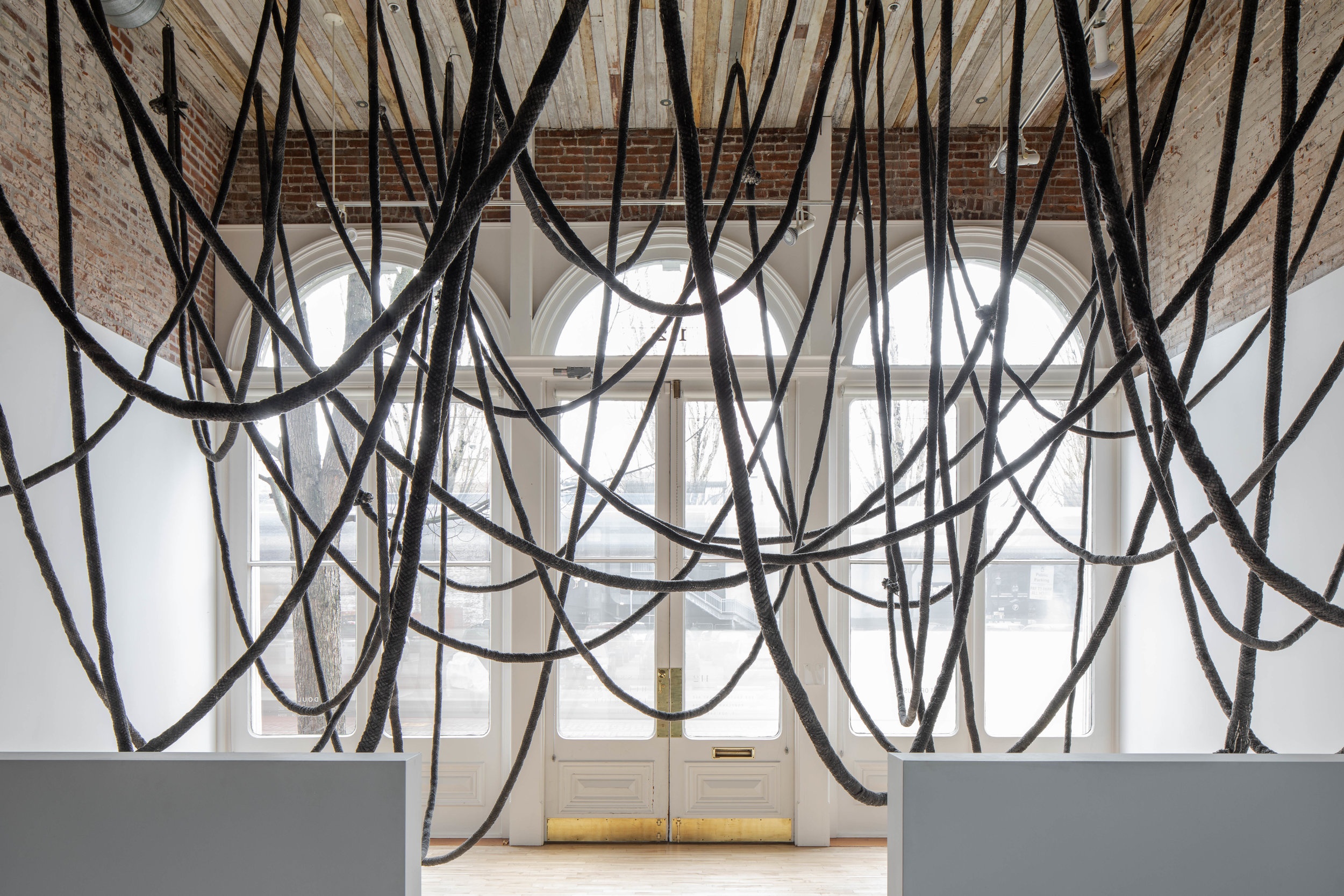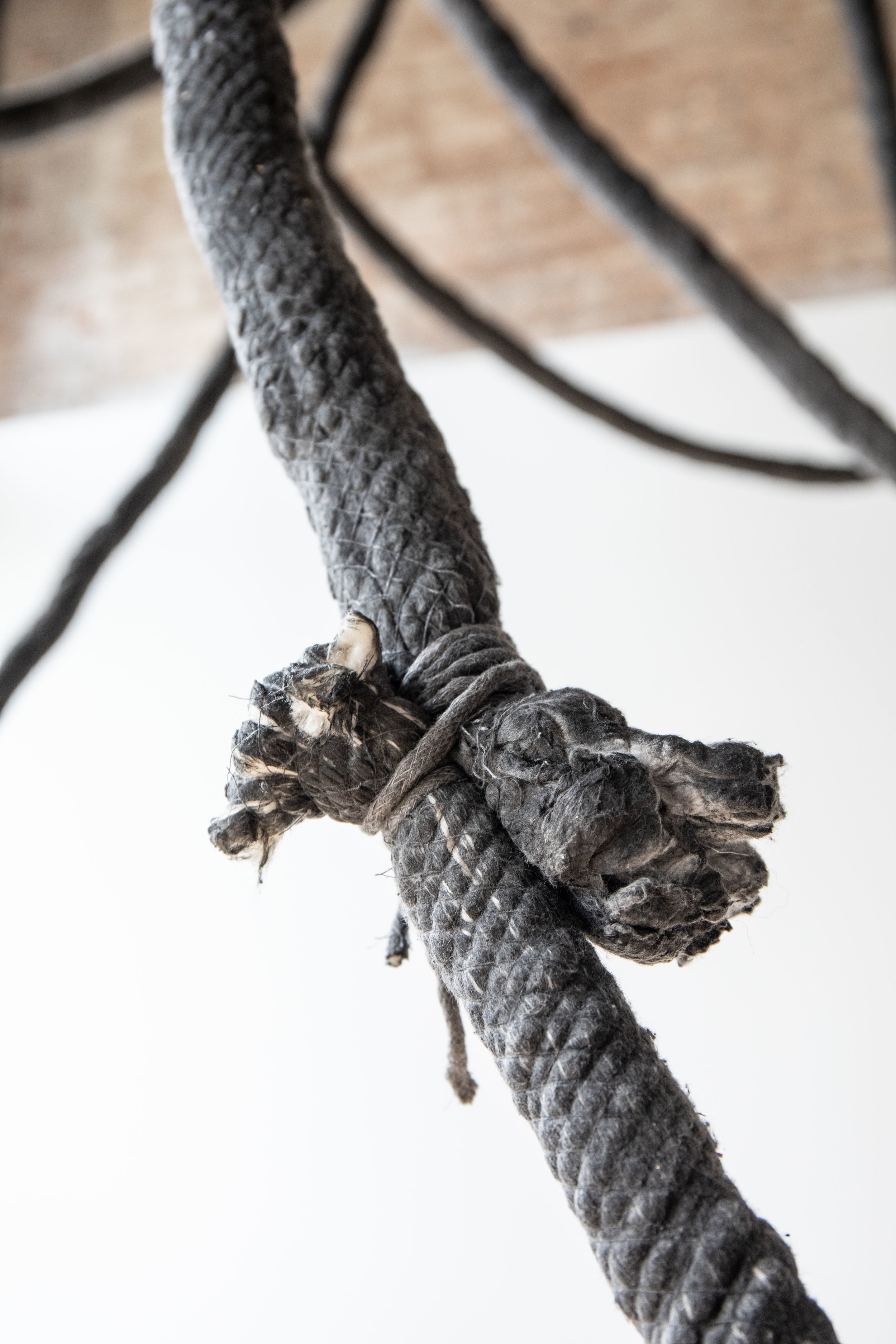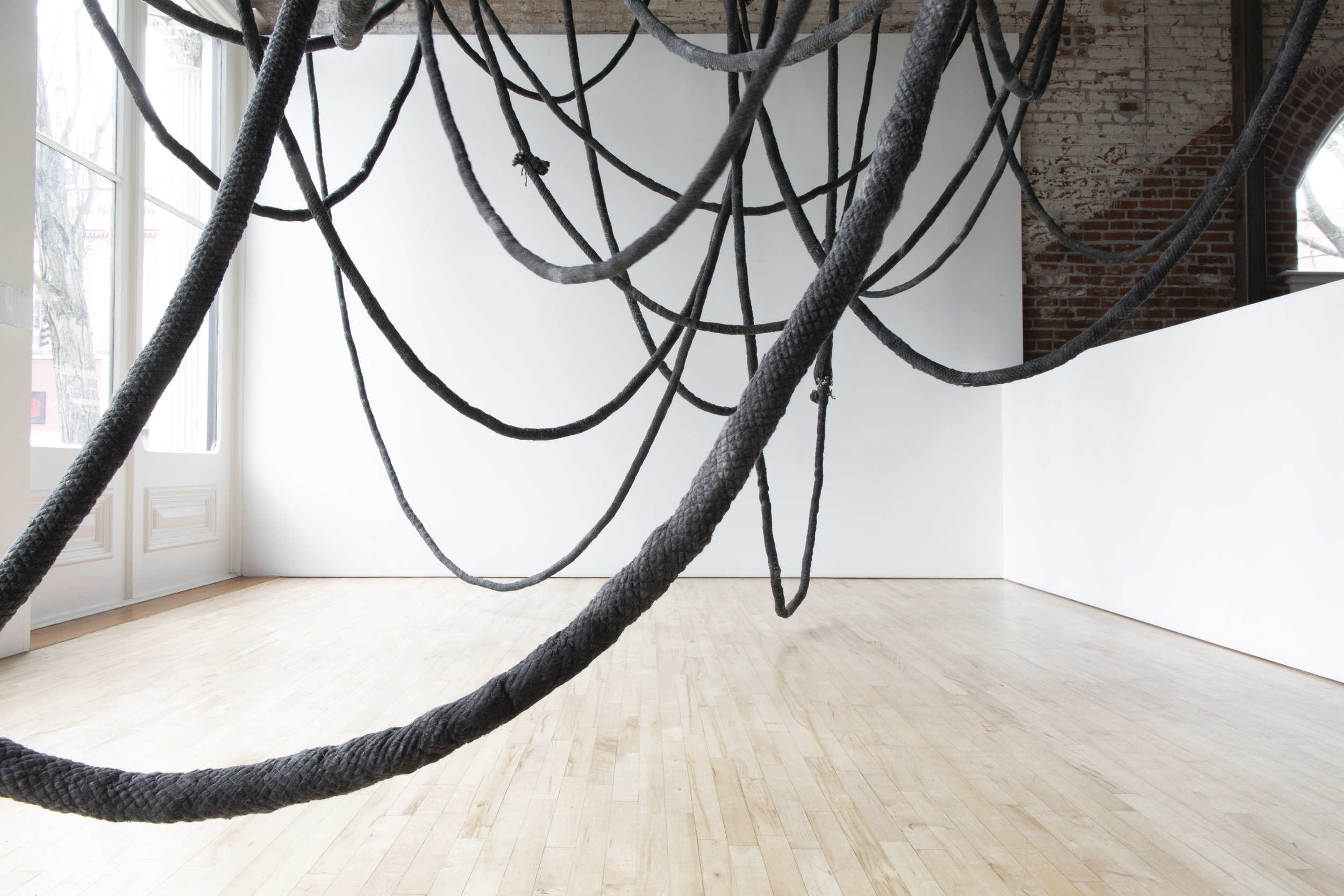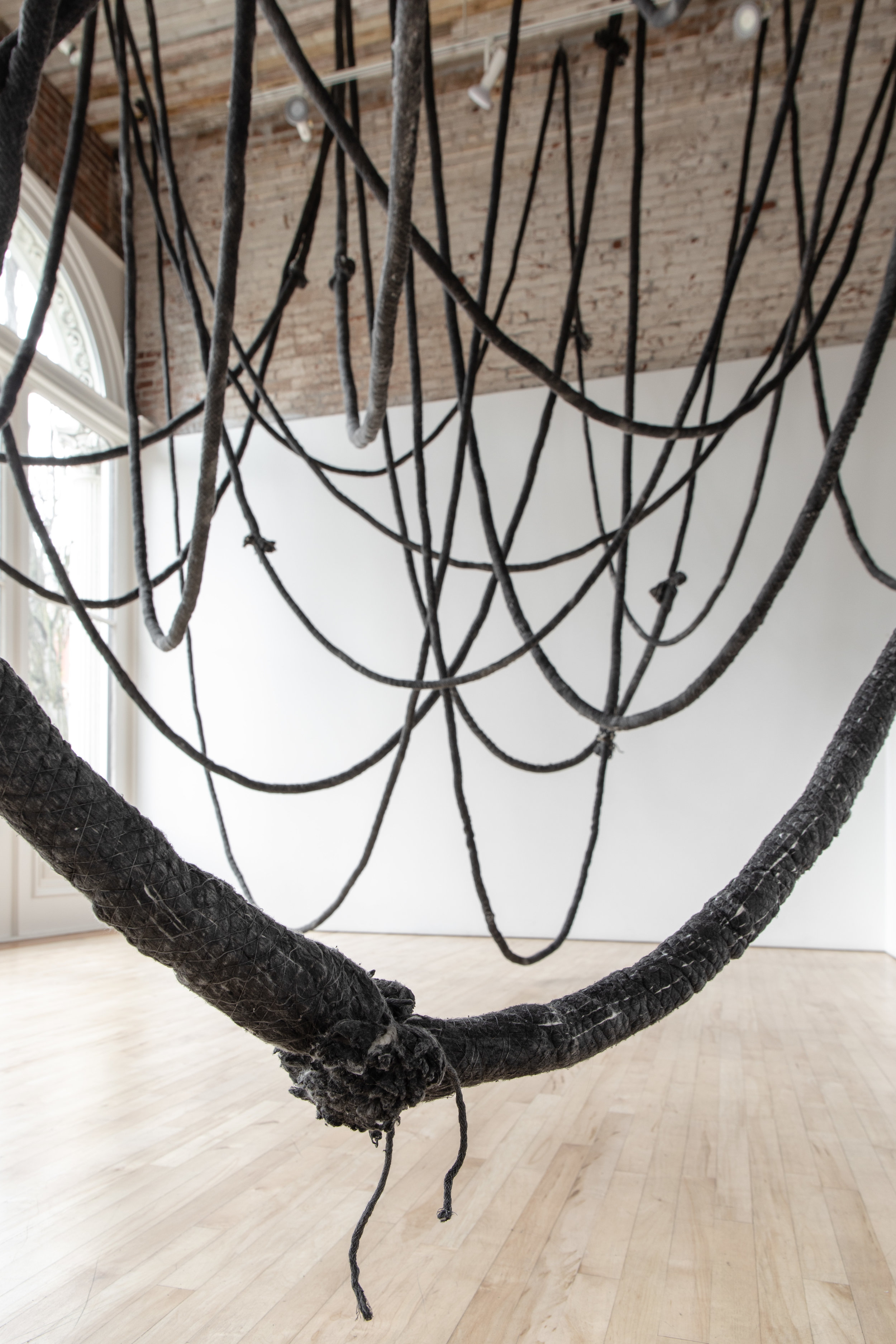HEATHER WATKINS
DRAWING ROOM
PREFACE
Yianni Doulis
From across the rainy street, seen brightly offset from its background: the impudent scrawl of a tagger’s graffiti; or the dark traces of a raptor’s fall and rise; or the rotten rigging of an abandoned ship. Flat and graphic, interesting enough to break you out of a reverie, draw you up to the door, and bring you inside. Now more clearly revealed as the web of a spider you hope never to meet, fat drapes of web blocking your way. Like all good traps, leading you in and snaring you despite yourself. Slices of space open up between the hanks of cord and shift as you move through them, scissoring open and shut. On a whim you decide to lie on the floor and look up. Suddenly the heavy catenary arcs spring up from a ceiling that has become the floor, and they take on the logic of Gothic vaulting. You linger and finally, up close - the cotton batting streaked and inky, each length of cord knotted to the next, its ends frayed open - the material facts of it become clearer.
Heather Watkins’ new work Drawing Room for Front of House can be seen as an extension of the deliberate, experimental work she has been doing with thread, ink, rope, and paper for some time. Its means are certainly the same, and she has written eloquently about her use of repetitive gestures, of “... recurrent enactments of physical and psychic phenomena.” The work is rigorously abstract, and focused on radically edited material effects, often in series. In this almost spiritual reduction her work recalls Abstract Expressionists such as Ad Reinhardt or Agnes Martin, whose company I don’t think she would mind keeping. In fact, Drawing Room has the same kind of distinct distances of viewing that Rosalind Krauss identifies in Martin’s paintings, and which I melodramatically evoke above. She clearly enjoys the patient exploration of how a material acts against a sheet of paper, against a wall, with light casting its shadow: on letting us see the facts and phenomena of her media.
What might be different about this new piece is the confidence with which it occupies space and enfolds the viewer, and how easily it evokes good old-fashioned menace. The salient element in this case may not be its materiality, but its emotional punch. There are any number of happy distractions to deflect us from this sense of sublime unease. To note a few: the density of lines, set against the surprising lightness of the cotton; the knotted, almost arthritic stiffness set against the ease with which our passing sets it swinging; the double reading of the arcs as both hanging loosely, and actively springing from the ceiling. But ... aren’t we also offered an oblique glimpse into another plane of existence, where these inky marks have a meaning we’ll never be fluent in, but can be vaguely worried about? Let me be clear: holding these two sensations in the mind at once: of material legibility and uneasy opacity, is the great pleasure of Drawing Room. I think it represents something new in Watkins’ work, and I look forward to what might come next from her careful process of exploring the new medium of space, in all its gentle terrors.
ARTIST BIOGRAPHY
Heather Watkins’ work explores the nature and possibilities of the drawn line – materially and symbolically. Working with ink, cord, thread, cloth, and paper, she submits these materials to many cycles of saturation, compression, intertwining, and transference. Through these physical processes, she investigates phenomena such as flow, stasis, circulation, and gravity. Her work takes many forms: sculpture, drawing, text-based work, printmaking, and artist’s books.
Her work has been shown in numerous exhibitions regionally and nationally, at venues including: PDX CONTEMPORARY ART (Portland, OR); Portland Art Museum (Portland, OR); Planthouse (New York, NY); the lumber room (Portland, OR); CANADA (New York, NY); The Art Gym, (Marylhurst, OR); and Nine Gallery (Portland, OR). Her work is held in private and public collections including the Portland Art Museum, the Miller Meigs Collection, the Regional Arts and Culture Council’s Portable Works Collection, the Collection of Jordan D. Schnitzer; the Artist’s Book Collection of the Museum of Modern Art; and Rhode Island School of Design Artist’s Book Collection. She has completed major public art commissions for Portland State University and Portland Community College. She has been the recipient of grants from Oregon Arts Commission, The Ford Family Foundation, and Regional Arts & Culture Council, and has been awarded residencies at Caldera, at the Sitka Center for Art & Ecology; Oregon College of Art and Craft; and at Em Space Book Arts Center. Watkins holds an MFA from the Rhode Island School of Design. She is represented by PDX CONTEMPORARY ART.
ARTIST’s notes
a working drawing -
drawn to each other,
we draw up contracts that form lines between us
draw upon experience
pull our selves together
draw each other out / down / back / in
drawing -
breath, blood, straws,
attention, distinctions, conclusions,
weapons, crowds
we string up power lines,
track our time in loops and grids,
seeking continuity and connection
then lay lines in sand, sorting you from me, us from them
until the score is tied, or we are tired -
a draw
drawing
what we see, want, need
making room





